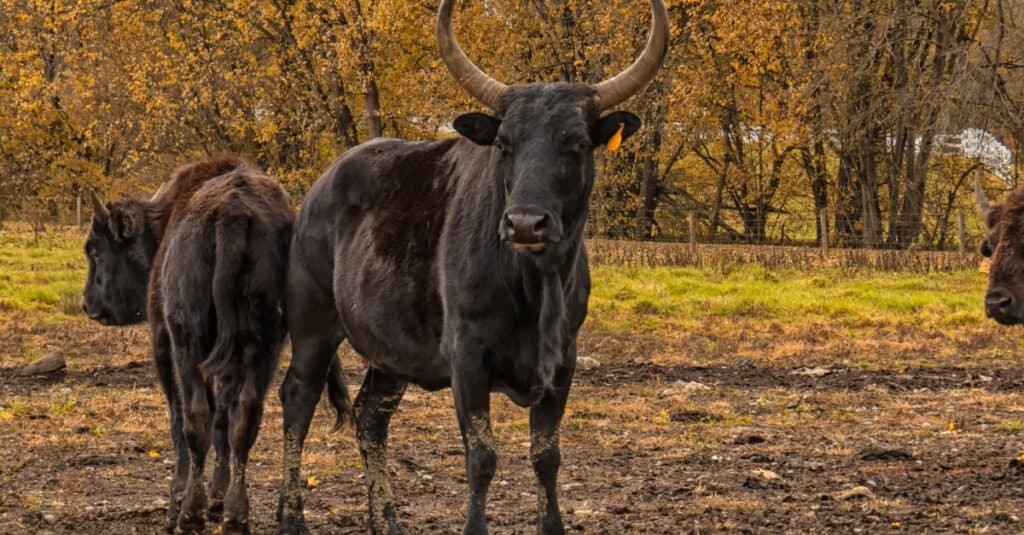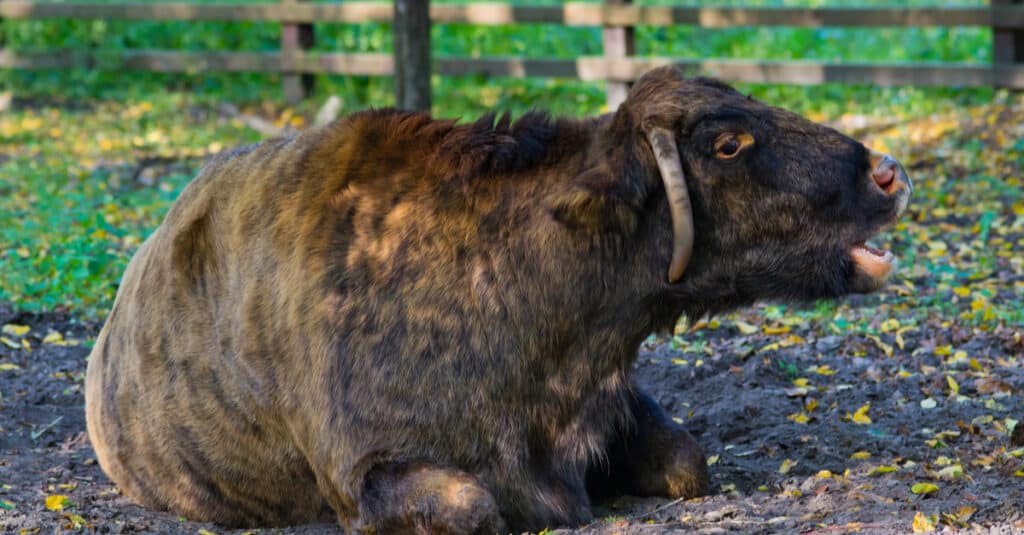Cows and buffalo (American bison) are the two most commonly raised bovids in the United States. Bison have lived in North America for upwards of 400,000 years, while modern cattle were only brought over during the 17th century. Since then, various hybrids have cropped up, each with its distinct features. Today, we will compare two of them, the cattalo vs beefalo. Let’s see what makes them unique!
Comparing a cattalo and a beefalo

Cattalo are any mixture of a cow and a buffalo, while beefalo are an officially recognized cattle hybrid.
©Mark Spearman / flickr – License
| Cattalo | Beefalo | |
|---|---|---|
| Genetics | Colloquial name for any cross between cows and buffalo. | Exactly 3/8ths buffalo and 5/8ths cattle. |
| Appearance | Varies, but often a closer mix between cows and buffalo. | Much more resembles cattle, as its genetics would suggest. |
| Populations and breeding programs | No official breed standard or program. | Populations are overseen by the American Beefalo Association. |
The key differences between a cattalo and a beefalo
The key differences between cattalo and beefalo are genetics, appearance, population, and breeding programs.
Cattalo and beefalo are both comical names made up of combining the words “cattle,” “beef,” or “buffalo” into various mashups. Both names are occasionally used interchangeably, although there are some differences between them.
Cattalo is a loose term that can reference any cross between a cow and a buffalo (American bison), while beefalo is a specific reference to a recognized cow-buffalo hybrid. It’s generally better to think of cattalo as a category and beefalo as a specific breed within that category.
Since cattalo is a rather loose term, there aren’t a lot of specifics surrounding how they look or appear. Still, they are generally a closer 50/50 split of cow and buffalo, whereas beefalo are always 3/8ths buffalo and 5/8ths cow.
Let’s explore these differences a bit more below.
Cattalo vs Beefalo: Genetics

Beefalos are always 3/8ths buffalo and 5/8ths cow.
©Milan Rybar/Shutterstock.com
The cattalo doesn’t have a breed standard, but it is generally recognized to be any cross between a cow and a buffalo. A simple cross between the two creates a 50/50 hybrid and has many of the traits of both parents. This hybrid is often recognized as a docile but hardy animal with leaner, more tender meat.
Beefalo could technically be considered cattalo, just more specific. In order to be classified as a true beefalo, a herd must be 3/8ths buffalo and 5/8ths cow. Once stable herds are established, they can interbreed and continue creating more beefalo without needing pure cattle or buffalo.
Cattalo vs Beefalo: Appearance

Beefalo look like standard cattle.
©CCat82/Shutterstock.com
Since cattalo isn’t a specific breed, its appearance can vary. Still, cattalo are generally closer to a 50/50 mix of the parents and will reflect this in their appearance. They often have a body shape that appears front-loaded, similar to a bison, plus their horns are often small and curved like a bison.
Beefalo almost always resemble the breed of cattle that is used to create them. Since they are more cattle than they are buffalo, they only show the temperament traits of a buffalo and not as much physical appearance.
Cattalo vs Beefalo: Populations and breeding programs
There are no official cattalo breeding programs or populations, although the animals do exist across the United States.
Beefalo are a much more regulated breed of cattle and have official oversight by the American Beefalo Association. The organization has livestock, meat, and membership available for anyone interested in the breed.
The photo featured at the top of this post is © Mark Spearman / flickr – License / Original
Thank you for reading! Have some feedback for us? Contact the AZ Animals editorial team.






